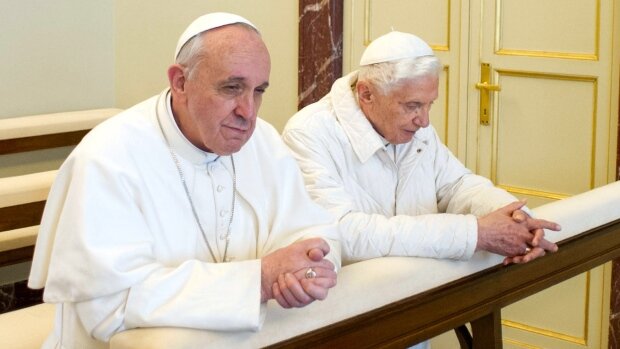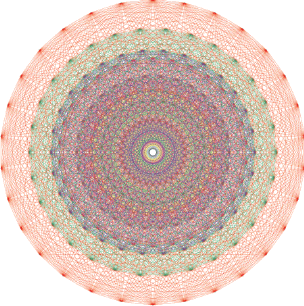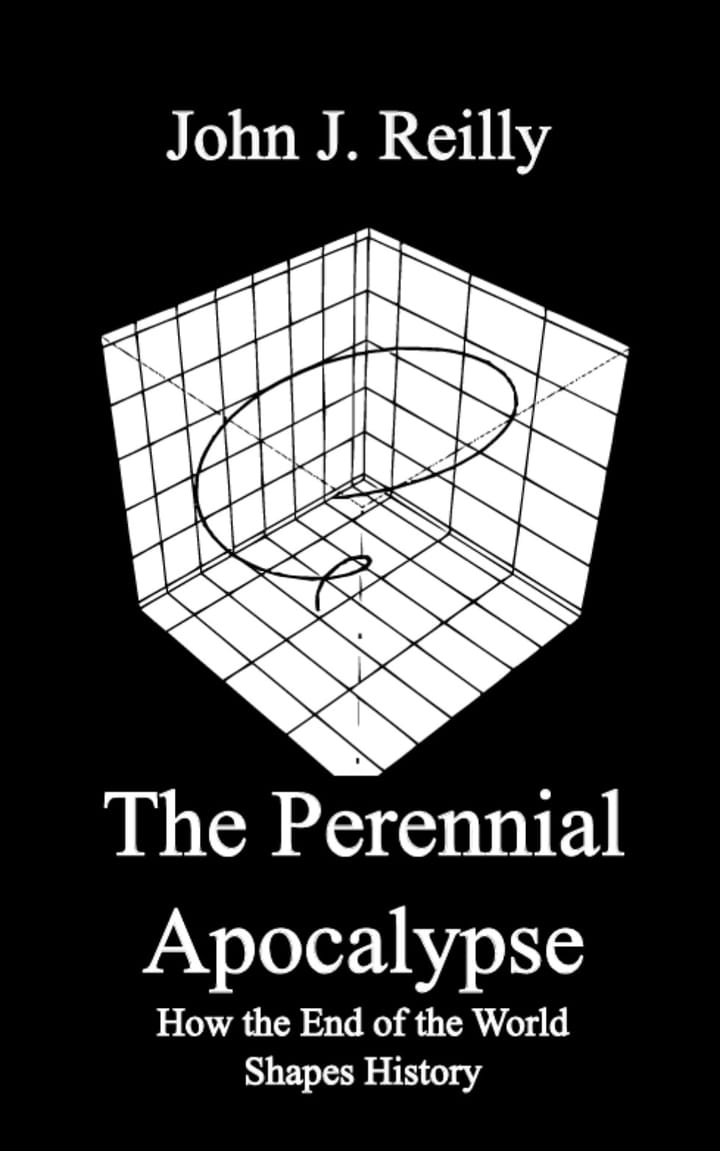The Long View 2007-11-17: Surge in Oil Helps Surge in Iraq; Traditionalism Blog; The Papal Executive; Testable Theory of Everything; Imperial Transhumanism

John links here to his great book review The Future of the Papacy, which points out that the Papacy isn’t really meant to function as an executive, but that historical circumstances have forced it to do so. The papacies of Benedict XVI and Francis have been united in that both Popes have been slowly dialing back the executive functions of the Papacy.
Surge in Oil Helps Surge in Iraq; Traditionalism Blog; The Papal Executive; Testable Theory of Everything; Imperial Transhumanism
Expensive oil is good for Iraq, or so Victor Davis Hanson surmised at works and days on November 13:
There are three sub-texts rarely discussed—at least publicly—about the so-called Anbar awakening. First, oil is now $98 a barrel. Even with oil production still not quite at 2003 levels, the Iraqi government is raking in an enormous amount of cash...the notion that life could be pretty good with oil wealth and without US bullets—coupled with the acknowledgment that the elected government wasn’t going to quit or flee—played a large role in turning things around.
Regular readers may recall that I made about the same point at about the same time. This does not mean that VDH reads my blog, and though I do read his, I am pretty sure I did not see it that day. Maybe it does mean that, though a million monkeys typing randomly may not necessarily produce Shakespeare, we can be sure that some monkey will accuse another monkey of plagiarism.
* * *
Mark Sedgwick, the world's leading academic authority on esoteric Tradition, has a new blog dedicated to the subject. Among other things, I found this link to a video in French giving a sympathetic treatment of Rene Guenon. Even if, like me, the state of your French is that you can read it after a fashion but can only pick out a sentence here and there, you may still find the video interesting.
* * *
Speaking of tradition in the conventional sense, Damian Thompson at the Daily Telegraph reports on Benedict XVI's master plan for a genuine reformation:
The 80-year-old Pontiff is planning a purification of the Roman liturgy in which decades of trendy innovations will be swept away. This recovery of the sacred is intended to draw Catholics closer to the Orthodox and ultimately to heal the 1,000 year Great Schism. But it is also designed to attract vast numbers of conservative Anglicans, who will be offered the protection of the Holy Father if they co[n]vert en masse..."Pope Benedict is isolated," I was told when I visited Rome last week. "So many people, even in the Vatican, oppose him, and he feels the strain immensely." Yet he is ploughing ahead. He reminds me of another conservative revolutionary, Margaret Thatcher, who waited a couple of years before taking on the Cabinet "wets" sabotaging her reforms.
Readers of this site will know that I approve of Benedict and all his works. His policy is necessary for the Church in this era and, as that Spengler at Asia Times never ceases to remind us, to the future vitality of the West. On the other hand I have long had a lively sense that the papacy is not really an executive. The Vatican is more like the American Supreme Court than like the American Presidency (and I suppose it is significant that the Vatican became confused about its role at just about the time that the Supreme Court did about its own). In some historical periods, the Vatican must function as an executive, but such times are emergency episodes that are both nerveracking and unsustainable.
* * *
This could end the String Theory industry, and the media will love the source
An impoverished surfer has drawn up a new theory of the universe, seen by some as the Holy Grail of physics, which has received rave reviews from scientists...Garrett Lisi, 39, has a doctorate but no university affiliation ...Lisi's model also takes account of gravity, a force that has only successfully been included by a rival and highly fashionable idea called string theory,...Lisi's inspiration lies in the most elegant and intricate shape known to mathematics, called E8 - a complex, eight-dimensional mathematical pattern with 248 points first found in 1887, but only fully understood by mathematicians this year after workings, that, if written out in tiny print, would cover an area the size of Manhattan...E8 encapsulates the symmetries of a geometric object that is 57-dimensional ...What Lisi had realised was that he could find a way to place the various elementary particles and forces on E8's 248 points. What remained was 20 gaps which he filled with notional particles, for example those that some physicists predict to be associated with gravity.
Here is a representation of E8, the graphic that will appear on 90% of the t-shirts on Earth if this model pans out:

What I take the model to mean (and correct me if I am wrong; that is why I keep a blog) is that the universe resembles E8 in the way that chemical matter resembles the Periodic Table. You can generate a spot for every possible chemical element by using a little simple geometry to describe a rectangle; you can generate a spot for every possible subatomic particle by using a somewhat more complicated geometry to describe E8.
Somewhere, I think, Johannes Kepler is turning somersaults.
Lisi's website is here. Note that he has done a fair amount of publishing. He has a Bayesian approach to quantum mechanics, which is just the notion that a quantum wave collapses when an observer gets more information. This requires the supposition of an "action reservoir," a model analogous in some ways to the description of entropy. Again, if I misunderstand, please tell me.
It will be years before science can say yea or nay to this model, but it does have the blessed advantage over most forms of String Theory of being relatively easy to test. At any rate, now we know what happened to those slackers from Fast Times at Rigdemont High.
* * *
If the Era of Contending States in Chinese history was a modernity, and the foundation of the Qin Dynasty at the end of the third century B.C. its terminus, then I wonder: was the First Emperor's alchemical search for immortality a kind of Transhumanism?
This though occurred to me as a watched The First Emperor: The Man Who Made China, a Discovery Channel documentary that I found on Google-YouTube. (The observation is not original with me, I believe: someone on this blog's bulletin board made it before I lost all that data over the summer.) The series was well-meant, but not invariably acute. Qin Shihuangdi, for instance, did not build "The Great Wall"; he built a Great Wall, in roughly the same place as the Ming Great Wall built 1,500 years later. In any case, the documentary treats at length of the terra cotta warriors and associated artifacts that began to be discovered in the 1970s at the emperor's tomb. However, the tomb itself has never been opened. I watched all the segments with great interest to see when this will happen. As we see from this segment, the archeologists have no such plan at present, but content themselves with soundings and chemical tests.
If you go to the last segment, you will find that the test of the soil around the tomb for traces of mercury were successful. In fact, the samples seem to reproduce the map of ancient China that the mercury was said to have been used to create. Nonetheless, I find the situation intolerable. I want that tomb opened. I want that tomb opened now!
Copyright © 2007 by John J. Reilly
Support the Long View re-posting project by downloading Brave browser, and then trying it out. With Both Hands is a verified Brave publisher, you can leave me a tip too!



Comments ()